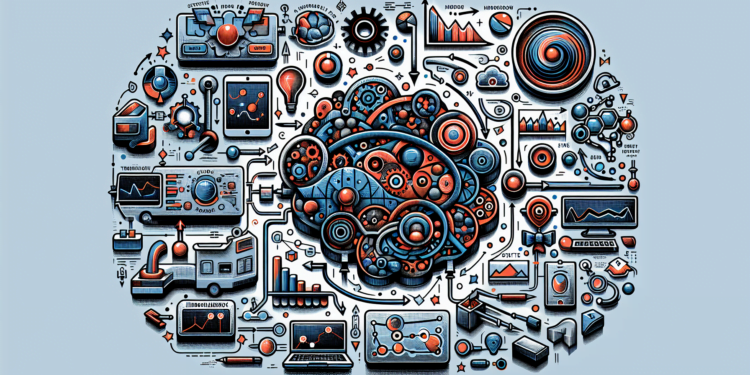Hidden Markov Models (HMMs) have been a cornerstone in the evolution of Artificial Intelligence (AI), particularly in natural language processing and pattern recognition. An HMM is a statistical model in which it is assumed that the system being modeled is a Markov process with hidden states, that is, not directly observable. In this sense, the HMM extends Markov models by including a layer of observations that are probabilistically linked to the hidden states.
Foundations of HMMs
Structure and Markov Axioms
HMMs rest on the premise that the generative statistical model can be represented as a set of interconnected states, where transitions between states are defined by probabilities. Each state has an associated probability function that defines the distribution of observations that can be generated from that state.
A fundamental aspect of the HMM is the so-called Markov axiom, which postulates that the probability of transitioning to any future state depends only on the current state, not on the history of previous states. This principle of temporal independence is central to the computational simplicity of HMMs.
HMM Parameters
HMMs are characterized by three sets of parameters:
- State transition probabilities ($A$): a matrix that specifies the probabilities of moving from one state to another.
- Emission or observation probabilities ($B$): defines how observations are generated from the states.
- Initial state probabilities ($pi$): a vector indicating the probability that the process begins in each state.
- Evaluation: Given a model and a sequence of observations, determine the probability of that sequence within the model, typically implemented using the Forward algorithm.
- Decoding: Given a sequence of observations, infer the most probable sequence of states, often addressed with the Viterbi algorithm.
- Learning: Adjust the model’s parameters to maximize the likelihood of a set of observation sequences, usually achieved through the Baum-Welch algorithm or Expectation-Maximization.
Inference Processes
The utility of HMMs reaches its full potential by performing three fundamental tasks:
Recent Advances and Applications of HMMs
Improvements in Inference and Optimization
Inference methods in HMMs have advanced considerably. The refinement of training and decoding algorithms has allowed for scalability and more robust applications. Strategies such as gradient boosting and genetic algorithms have been used to optimize HMM parameters in complex contexts.
Deep Learning and HMMs
The advent of Deep Learning (DL) has paved the way for the integration of HMMs and neural networks, leading to hybrid models that take advantage of both approaches. For example, neural network models can be used to learn high-dimensional representations of data, upon which HMMs are then applied for temporal sequence modeling.
Practical Applications
HMMs have proven their value across multiple domains:
- Speech Recognition: HMMs form the basis for modeling phonetic sequences in speech and have been implemented in voice recognition systems until the arrival of DL-based models.
- Bioinformatics: The prediction of protein secondary structures and the alignment of genomic sequences are applications where HMMs play a critical role.
- Finance: In financial risk modeling and asset pricing, the use of HMMs helps to understand regime shifts in financial time series.
Relevant Case Studies
The deployment of HMMs in tracking user behavior in digital environments is a leading example. Through sequences of clicks, dwell times, and navigation between pages, HMMs can infer hidden states that represent user interest or intent, providing crucial insights for content personalization and targeted advertising.
Future Perspectives
Advanced Models and Complexity
It is anticipated that future research will delve into more complex models than traditional HMMs, such as Hierarchical Hidden Markov Models or combining them with generative adversarial models for greater flexibility in sequence generation and discrimination.
Interpretability and Explainability
A constant challenge in AI is to improve model interpretation. In the context of HMMs, this means developing visualizations and metrics that allow humans to better understand the modeled state sequences and transitions.
Integration with Other AI Areas
The conjunction of HMMs with areas such as robotics and multi-agent systems promises significant advances in tasks requiring real-time sequence modeling and decision-making.
In conclusion, Hidden Markov Models, despite not being the latest innovation in AI, continue to evolve and find new applications. The development of more efficient HMM algorithms, their integration with deep learning techniques, and the expansion into new domains underscore their perpetual relevance in the construction of advanced intelligent systems. Research continues in pursuit of the perfect synergy between traditional statistical and probabilistic tradition and advances in data science and machine learning, promising an unceasingly innovative horizon.






















